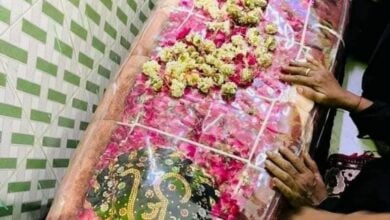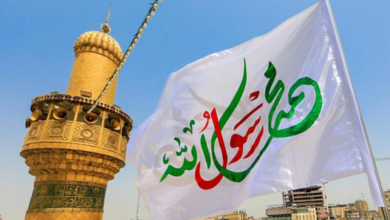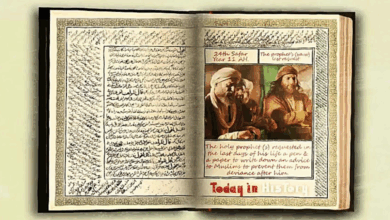First to Seventh of Rabi al-Awwal Mark Mohseniyyah Week, Mourning Tragedies of Ahl al-Bayt

The first week of the month of Rabi al-Awwal has been designated as the Week of Commemoration for the Honourable Mohsen ibn Ali (peace be upon him). During this period, Shia Muslims around the world gather to mourn the tragic loss of Mohsen, the son of Amir al-Mu’minin Ali and Lady Fatimah (peace be upon them).
A few days after the martyrdom of Prophet Muhammad (peace be upon him and his family), at the beginning of Rabi al-Awwal, a brutal attack was launched by hypocrites and usurpers of the Divine caliphate against the home of Amir al-Mu’minin Ali and Lady Fatimah (peace be upon them). This assault resulted in the martyrdom of his Honourable Mohsen, while Lady Fatimah sustained injuries that eventually led to her own martyrdom.
Many prominent Shia scholars, including Qadi al-Nu’man al-Maghribi, Muhaqqiq al-Ardabili, Ibn Abi Jumhur al-Ahsa’i, Shaykh al-Tusi, Shaykh Muhammad Hussein al-Kashif al-Ghita, and Shaykh Abdul Jalil Qazwini al-Razi, have acknowledged the martyrdom of his Majesty Mohsen as undeniable and have explicitly stated this in their works.
Additionally, the attack on the house of revelation and the violation of the dignity of the Prophet’s daughter are documented in Sunni sources such as “Al-Musannaf” by Ibn Abi Shaybah, “Ansab al-Ashraf” by Baladhuri, “Tarikh al-Tabari” by Muhammad ibn Jarir al-Tabari, and “Al-Isti’ab” by Ibn Abd al-Barr, as well as early Shia sources such as “Al-Imamah wa al-Siyasa” by Ibn Qutaybah.
Throughout the Mohseniyyah Week, which continues the mourning traditions established during Muharram and Safar, Shia Muslims hold mourning assemblies to commemorate the attack on the house of revelation and the martyrdom of Sayyid Mohsen ibn Ali, peace be upon them both. These gatherings commence with the beginning of Rabi al-Awwal, following the directives of the Shia religious authority, Grand Ayatollah Sayyid Sadiq al-Hosseini al-Shirazi, who has emphasized the importance of mourning during this period as a continuation of the observances from Muharram and Safar.
In response to the religious authority’s directives, numerous Hussainiyahs, Shia Takiya centers, and related offices around the world have organized mourning assemblies in Mohseniyyah.
During a gathering commemorating the martyrdom of Prophet Muhammad, peace be upon him and his pure family, Grand Ayatollah Shirazi explained the significance of observing Mohseniyyah, stating that while the tradition of commemorating Mohseniyyah may not have been established in previous centuries, such acts are examples of “honoring Divine symbols” and bring reward and closeness to the Ahl al-Bayt (peace be upon them).
He further elaborated, noting that any action that is perceived as “honoring” and “revering” the Ahl al-Bayt (peace be upon them) is undoubtedly a symbol of Allah, emanating from the hearts of the pious.
Ahead of the final days of the month of Safar al-Ahzan, Grand Ayatollah Shirazi reminded the attendees that the Mohseniyyah is also a sacred symbol of Allah. He asserted that anything related to the Ahl al-Bayt (peace be upon them) that serves to honor and elevate their status is indeed a sacred symbol, regardless of whether such observances existed in the past.





